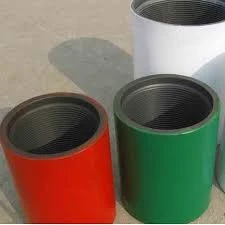- Afrikaans
- Albanian
- Amharic
- Arabic
- Armenian
- Azerbaijani
- Basque
- Belarusian
- Bengali
- Bosnian
- Bulgarian
- Catalan
- Cebuano
- Corsican
- Croatian
- Czech
- Danish
- Dutch
- English
- Esperanto
- Estonian
- Finnish
- French
- Frisian
- Galician
- Georgian
- German
- Greek
- Gujarati
- Haitian Creole
- hausa
- hawaiian
- Hebrew
- Hindi
- Miao
- Hungarian
- Icelandic
- igbo
- Indonesian
- irish
- Italian
- Japanese
- Javanese
- Kannada
- kazakh
- Khmer
- Rwandese
- Korean
- Kurdish
- Kyrgyz
- Lao
- Latin
- Latvian
- Lithuanian
- Luxembourgish
- Macedonian
- Malgashi
- Malay
- Malayalam
- Maltese
- Maori
- Marathi
- Mongolian
- Myanmar
- Nepali
- Norwegian
- Norwegian
- Occitan
- Pashto
- Persian
- Polish
- Portuguese
- Punjabi
- Romanian
- Russian
- Samoan
- Scottish Gaelic
- Serbian
- Sesotho
- Shona
- Sindhi
- Sinhala
- Slovak
- Slovenian
- Somali
- Spanish
- Sundanese
- Swahili
- Swedish
- Tagalog
- Tajik
- Tamil
- Tatar
- Telugu
- Thai
- Turkish
- Turkmen
- Ukrainian
- Urdu
- Uighur
- Uzbek
- Vietnamese
- Welsh
- Bantu
- Yiddish
- Yoruba
- Zulu
j55 coupling
Understanding J55 Coupling Essential Insights for Oil and Gas Industry
In the oil and gas industry, the efficiency and reliability of operations are paramount. One of the critical components facilitating smooth operations in this sector is the coupling, specifically the J55 coupling. J55 is a designation commonly associated with the steel grade used for casing and tubing in drilling operations. Understanding its properties, applications, and significance is crucial for professionals in the field.
What is J55 Coupling?
J55 coupling refers to a specific type of coupling used in the connection of oil and gas pipelines. The J55 grade, defined by the American Petroleum Institute (API), signifies a quality level of steel that meets certain mechanical and chemical property standards. This grade is typically employed for casing and tubing in various drilling operations, especially in environments where moderate axial load and corrosion resistance are necessary.
Properties of J55 Coupling
The J55 coupling is characterized by a tensile strength of approximately 55,000 psi, which is essential for withstanding the pressures encountered in downhole environments. In addition to its strength, J55 coupling exhibits good toughness, ductility, and resistance to environmental factors, making it suitable for use in challenging conditions. Its chemical composition typically includes carbon, manganese, phosphorus, and sulfur, contributing to its overall performance and durability.
Applications in the Oil and Gas Industry
j55 coupling

J55 couplings are predominantly utilized in well drilling and the completion phase of oil and gas extraction. Given the varying geological conditions and the physical demands placed on these couplings, they are designed for both surface and downhole Applications. In surface operations, J55 couplings serve in connecting pipes that carry drilling fluids, while in downhole contexts, they help stabilize the well structure and support the weight of drilling equipment.
In addition to drilling operations, J55 couplings are also utilized in the transport of hydrocarbons, ensuring a reliable transfer of oil and gas from the extraction site to refining facilities. Their robust nature allows them to maintain integrity under high-pressure scenarios, minimizing the risk of leaks or catastrophic failures.
Importance in Safety and Efficiency
The use of J55 coupling plays a vital role in enhancing the safety and efficiency of drilling operations. As the oil and gas industry faces increasing scrutiny regarding environmental impact and safety regulations, using high-grade materials like J55 helps mitigate risks associated with drilling. The strength and reliability of these couplings ensure that operations can proceed without unexpected failures, which can lead to costly delays and dangerous situations.
Moreover, the compatibility of J55 couplings with various well conditions allows for versatility in operations, enabling companies to optimize drilling strategies across different geographies and geological formations.
Conclusion
In conclusion, the J55 coupling is a fundamental component within the oil and gas industry, known for its reliability, strength, and adaptability. Understanding the features and applications of J55 couplings aids professionals in maintaining safety standards and improving operational efficiency. As the industry continues to evolve, the significance of materials like J55 will only grow, highlighting the importance of selecting the right components for successful drilling and extraction operations. Adopting advanced technologies and high-quality materials will pave the way for a more sustainable and efficient future in the energy sector.
-
Tubing Pup Joints: Essential Components for Oil and Gas OperationsNewsJul.10,2025
-
Pup Joints: Essential Components for Reliable Drilling OperationsNewsJul.10,2025
-
Pipe Couplings: Connecting Your World EfficientlyNewsJul.10,2025
-
Mastering Oilfield Operations with Quality Tubing and CasingNewsJul.10,2025
-
High-Quality Casing Couplings for Every NeedNewsJul.10,2025
-
Boost Your Drilling Efficiency with Premium Crossover Tools & Seating NipplesNewsJul.10,2025







